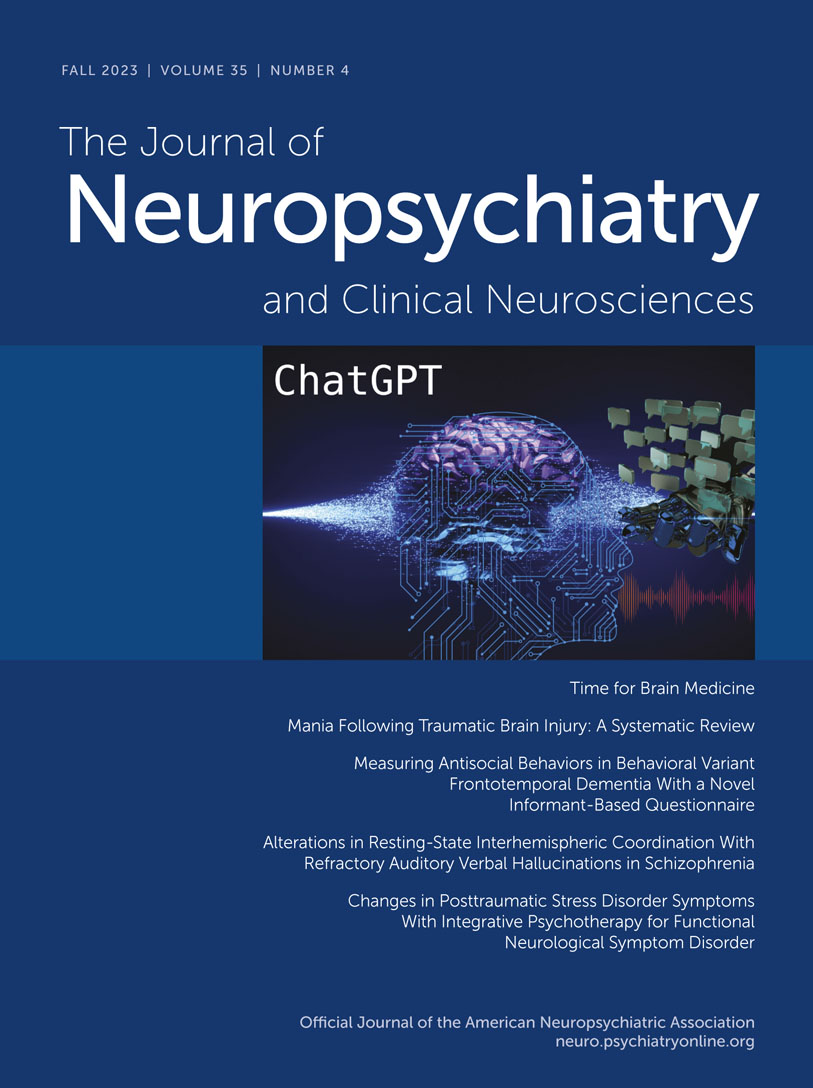Dimensional Assessment of Depression and Anxiety in a Clinical Sample of Adults With Chronic Tic Disorder
Abstract
Objective:
Among adults with Tourette syndrome, depression and anxiety symptoms are widely prevalent and consistently associated with poor quality of life. Important knowledge gaps remain regarding mood and anxiety dimensions of the adult Tourette syndrome phenotype. Taking a dimensional approach, this study sought to determine the prevalence, severity, and clinical correlates of depression and anxiety symptoms in a clinical sample of adults with Tourette syndrome and other chronic tic disorders.
Methods:
A retrospective chart review was conducted of all adults with a chronic tic disorder presenting to a tertiary care Tourette syndrome clinic between December 2020 and July 2022. Information extracted during chart review included data from scales administered as part of routine care: Quality of Life in Neurological Disorders (Neuro-QoL) Depression Short Form, Neuro-QoL Anxiety Short Form, Adult Attention-Deficit/Hyperactivity Disorder Self-Report Screening Scale, Dimensional Obsessive-Compulsive Scale, and Yale Global Tic Severity Scale. Relationships between variables were examined by conducting between-group, correlation, and multivariable regression analyses.
Results:
Data from 120 adult patients with a chronic tic disorder (77 men and 43 women) were analyzed. Neuro-QoL Anxiety scores were elevated in 66% of the cohort; Neuro-QoL Depression scores were elevated in 26%. Neuro-QoL Anxiety scores were significantly higher than general population norms, whereas Neuro-QoL Depression scores were not. After adjustment for covariates, depressive and anxiety symptom severity scores were significantly associated with each other and with obsessive-compulsive disorder symptom severity but not with tic severity. Sex-based differences emerged in the analyses.
Conclusions:
Among adults with chronic tic disorder, anxiety symptoms were more prevalent and severe than depressive symptoms, co-occurring psychiatric symptoms were more tightly linked with each other than with tic severity, and sex-based differences were evident.
Access content
To read the fulltext, please use one of the options below to sign in or purchase access.- Personal login
- Institutional Login
- Sign in via OpenAthens
- Register for access
-
Please login/register if you wish to pair your device and check access availability.
Not a subscriber?
PsychiatryOnline subscription options offer access to the DSM-5 library, books, journals, CME, and patient resources. This all-in-one virtual library provides psychiatrists and mental health professionals with key resources for diagnosis, treatment, research, and professional development.
Need more help? PsychiatryOnline Customer Service may be reached by emailing [email protected] or by calling 800-368-5777 (in the U.S.) or 703-907-7322 (outside the U.S.).



